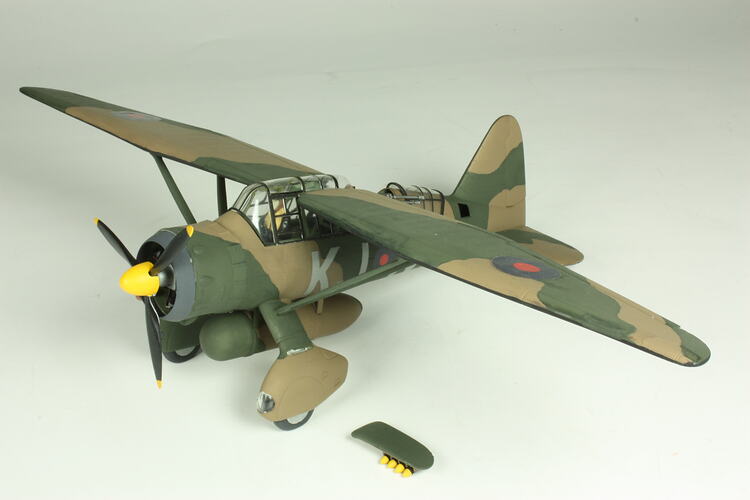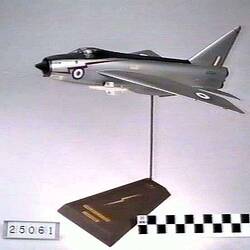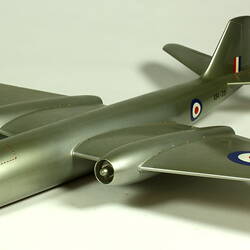Summary
Aircraft History:
Designed as an army co-operation aircraft designed by W.E.W 'Teddy' Petter son of Sir Ernest Petter founder of the well-known Petter Limited engine manufacturing firm and built by the Westland Aircraft Ltd at Yeovil, England. The Lysander featured a high strut-braced wing and a very strong one-piece cast duralumin U-shaped undercarriage unit which also served as a bomb-rack and mounting for two .303 machine guns. The prototype flew in 1936 and after testing was ordered into production for the Royal Air Force where it entered service in 1938. The Lysander served with the Royal Air Force (RAF) in France during the 1940 invasion by Germany. It was vulnerable to fighter attack but proved to be robust with good short take-off and landing performance. It also served in combat roles with the RAF in North Africa and Burma. The type is perhaps best known for being used in the 'Special Duties' role by the Special Operations Executive (SOE) to drop off and collect agents from occupied France. These Lysanders were painted black with a long-range fuel tank and access ladder and operated mostly from Tempsford airfield by 138 & 161 Squadrons RAF. A small number of Lysanders were operated by a flight of 3 Squadron RAAF in the Western Desert but none were brought to Australia. The Lysander was also built in Canada were they were mostly used for target-towing duties. Total production of Lysanders was 1400 by Westland and 225 in Canada.
Model History:
This 1:32 scale model is painted in the 1939 markings of 16 Squadron RAF, based at Old Sarum in Wiltshire. It was donated to the Museum in 1984 by Mr Colin Grey.
More Information
-
Collecting Areas
-
Acquisition Information
Donation from Mr Colin Grey, 13 Mar 1984
-
Manufacturer of Item Modelled
Westland Aircraft Ltd, Yeovil, Somersetshire, England, Great Britain, 1938-1940
-
Brand Names
-
Classification
Air transport, Aircraft, Model propeller aircraft - military
-
Category
-
Discipline
-
Type of item
-
Overall Dimensions
478 mm (Width), 295 mm (Depth), 135 mm (Height)
-
Model Scale
1:32
-
Keywords
Aeroplanes, Model Aeroplanes, Scale Models, Wars & Conflicts


